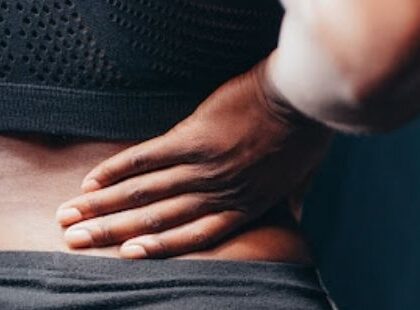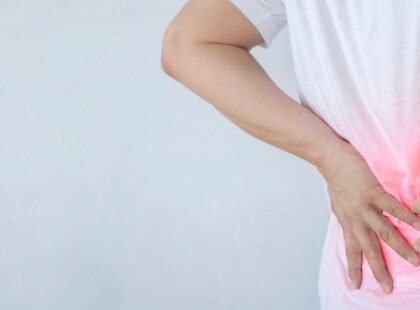
A Bulging disc is a common spinal injury that can occur to the intervertebral disc at any level of the spine. The bones of the spine are separated by a fibrous disc. This discs purpose is to act as a shock absorber and force distributer. These discs allow for movement to occur within the spine. The space that these discs create between vertebrae also allows for spinal nerves to pass between each segment.
The neck has the greatest range of movement, and as we proceed our way down the spine, the vertebrae become bigger and thicker and anatomically have less movement. The intervertebral discs, in the low back for example, mostly act as shock absorbers for weight distribution.

An intervertebral disc is comprised of two key elements:
1. The external annulus fibrosus (AF) which is comprised of several layers of fibrocartilage densely packed together. This component of the disc provides the rigidity and stability a disc needs.
2. The internal nucelous pulpousus (NP) is thick gel like and it has the capacity to move and adapt within the annulus in order to adjust to the pressures and forces placed through the spine.
What is a Bulging Disc

A bulging disc occurs when the structure itself of the intervertebral disc becomes damaged. This can occur in a few different ways and the different options account for the different levels of severity experienced.
- The AF can become disfigured and distorted. The NP remains in tact. The AF may or may not, in its disfiguration be impacting on spinal nerves. This type of bulging disc may be asymptomatic, however the individual may experience some stiffness and muscle spasm in the surrounding area.
- The NP remains relatively intact, however it, along with AF is disfigured. This will likely be impacting on the spinal nerves, especially if the bulge is asymmetrical. This type of bulge is known as a protrusion or protruding disc.
- Ruptured NP. This is known as a herniated disc and occurs when the NP itself is torn is potentially leaking fluid out. Disfiguration of the AF will also be present.
It is also common to have asymptomatic bulges - that is discs that are injured but are not causing any pain or discomfort.
What causes a Bulging Disc?
- Sudden Onset - This is where unexpected forces carry through the disc as is in the form of a car accident or in the attempt to try and lift something and it being much heavier than what was prepared for.
- Gradual Onset- This is where repetitive micro trauma is created overtime. This is most likely to occur with poor posture and poor technique in the gym or with various activities such as extended periods of being positioned incorrectly. A gradual onset towards a disc injury is fairly common.
- Genetic predisposition & age - As we age the quality of our discs, as do our joints does wear out. It is not uncommon to develop asymptomatic bulging discs over time. Genetic factors account for a small amount of contribution towards bulging disc injury.
Bulging Disc Symptoms
- Localised intense pain
- Restricted movement
- Muscular spasm of the surrounding area
- Nerve pain - this could be sciatic in nature if a lumbar disc is affected, or the nerves of the arm can be troubled if a cervical disc bulge is at play
- Altered bowel and bladder function.
- Difficulty getting comfortable
- Stiffness
Bulging Disc Treatment
Most incidents of Disc injury can be treated conservatively without the need for surgical intervention. However with extreme injury an impact on the nerves surgery is often the best option.
Our Chiropractors will be able to take you through the full treatment process from assisting with initial pain relief, to the required exercise rehabilitation and then to restoring full function.
Pain relief is the initial action required. Our team will help with the reduction of muscular spasm. This is often the highest cause of pain with mild disc bulges. You can further assist by alternating ice and heat to the affected area and taking prescribed anti - inflammatories.
The treatment process includes relieving the localised muscular spasm, settling down any nerves that are affected and removing any other pressure from the affected spinal segment.
Exercise Rehabilitation can then be prescribed once the inflammation is down and some movement is restored. Our team will recommend gentle exercises that are suitable for you to safely do from home as well as guide you in any exercise regime that you may be undertaking.
If you feel that this may be something you are suffering from, or simply have ongoing low back pain, feel free to check in with us or book yourself in online here.













